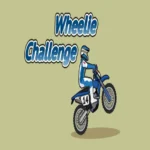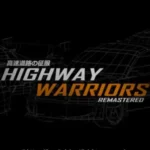Sonic Racing: CrossWorlds
Description
Introduction to Sonic Racing: CrossWorlds APK
Sonic Racing: CrossWorlds is the latest entry in SEGA’s kart-racing franchise, combining high-speed arcade thrills with fresh dimensional twists. As racers jump through “Travel Rings” mid-race into alternate track segments, the pacing remains unpredictable and exhilarating. CrossWorlds aims to differentiate itself from its peers by emphasizing strategic racing over pure luck, giving players tools to optimize performance through gadgets and customization. With cross-platform play, vibrant visuals, and a roster of beloved characters, it’s a bold new take on kart racing for modern devices.
Key features of Sonic Racing: CrossWorlds APK you need to know
1. CrossWorlds Dimension Mechanics
- During lap transitions, the lead racer can warp into alternate track paths or new worlds, keeping rival drivers on their toes.
- This mechanic ensures no two races feel completely predictable, as track layout can shift dynamically.
2. Vehicles, Gadgets & Customization
- Over 40 vehicles, 70+ gadgets, and 100+ vehicle parts and decals let you tailor your kart’s stats (speed, handling, acceleration) to your playstyle.
- You can mix & match chassis, gadgets, and cosmetic elements to craft builds.
- Gadgets act as passive or active enhancements (e.g. boost tweaks, item boosts).
3. Racing Modes & Multiplayer
- Standard kart racing modes: Grand Prix, Time Trial, and online multiplayer with cross-play support.
- Race Park mode introduces more chaotic, item-heavy competition.
- Fair-play system penalizes quitting mid-race.
- Cross-platform matchmaking ensures you can race users on PC, consoles, and supported Android (if APK) devices.
4. Track Variance & Terrain Types
- Tracks span land, water, air, and space segments, with transitions between them.
- Some sections require drifting, aerial control, or boat-like movement for optimal performance.
- Environmental effects and dynamic hazards add extra challenge (e.g. item volleys, terrain traps).
5. Character Roster & Crossovers
- At launch: well-known Sonic characters plus crossovers like Hatsune Miku, Persona 5’s Joker, and Minecraft’s Steve in forthcoming content.
- SEGA has committed to free monthly additions of characters and karts for one year post-launch.
6. Technical Performance & Polish
- Reviewers praise smooth framerates and minimal lag on high-end hardware.
- Some platforms (e.g. Switch) exhibit graphical downgrades but playable performance.
- Visuals, color palettes, and effects are bold and energetic, though occasionally over the top.
What are the Pros and Cons of Sonic Racing: CrossWorlds APK?
Pros |
Cons |
|---|---|
| Dimension-warping track segments add unpredictability and strategic variety | Visuals and effects can feel chaotic or overwhelming in crowded races |
| Deep customization system (gadgets, chassis, parts) appeals to players who like fine tuning | Lower speeds feel sluggish; some handling criticisms at slower pace |
| Cross-platform multiplayer and stable online matches reported with minimal lag | Lacks a full single-player campaign or narrative mode |
| Strong core gameplay, praised as “buttery smooth,” with satisfying drifting mechanics | Progression and rewards sometimes fail to feel meaningful; rubber banding criticized |
| Frequent live events and crossovers (e.g. Minecraft Festival) prolong longevity | Occasional imbalance in item effects; players sometimes blindsided by items with little defense |
| Launch reception is excellent: high user approval and critical praise | A few tracks and sections are flagged as weaker or less memorable in design |
How does Sonic Racing: CrossWorlds APK captivate players through its stunning graphics and immersive sound?
Graphics & Visual Design
- Bold, saturated presentation: Multiple critics note that CrossWorlds pushes a vivid, high-contrast aesthetic: tracks “brighter, bolder, and louder than any other karting game I’ve ever played.” The developers sometimes push this so far that segments feel like a “living obstacle course,” with visual stimuli constantly competing for attention.
- Smooth performance under chaos: Despite heavy visual effects, reviewers report steady frame rates on high-spec systems (e.g. in Performance Mode on consoles). The “buttery smooth” feel of steering and drifting complements the visual intensity.
- Track-specific coherence & spectacle: Each track leans into a “theme” – for instance, Wonder Museum, Dinosaur Jungle, Kraken Bay – with large set-pieces and environmental effects that reinforce the theme (e.g. shifting terrain, visual transitions tied to the CrossWorlds mechanic). Some critics feel a few world designs are underwhelming relative to their flashy surroundings, but the majority of track variety is praised.
- Heritage & visual callbacks: CrossWorlds doesn’t shy away from referencing past Sonic design elements and Sega franchises. Hidden motifs or structural echoes (e.g. nods to After Burner, retro Sonic areas) give long-term fans visual easter eggs to find mid-race.
Audio, Music & Sound Effects
- Lead Theme & Opening Song: The opening theme is called “Cross the Worlds”, composed by Takahiro Kai and performed by James Bourne (of pop band Busted) with rap vocals by “Chez.” This vocal, energetic intro immediately sets the tone for the game as theatrical and over-the-top — some players call it “hot cheese” in affectionate acknowledgment of its bold approach.
- Sound Team & Additional Composers: The broader OST roster includes composers and sound designers like Kanon Oguni, Tae Fujimoto, Hidekuni Horita, Iona Takashima, and more, under the lead of Takahiro Kai. Tomoya Ohtani and Jun Senoue serve as supervising Sonic sound leads.
Sega recently announced new OST tracks made available for streaming, including remix collaborations with well-known composers like Tee Lopes. - Dynamic track music & remixes: CrossWorlds’ soundtrack doesn’t just loop a single beat. Instead, tracks evolve based on race progression, lap phases, and transitions between track variants. Many tracks are remixed versions of classic Sonic compositions. For example:
- “Market Street” (from Sonic Unleashed) remixed by Camellia
- “Dragon Road” (original by Kenichi Tokoi) arranged in DJ mixes
- “Sweet Mountain,” “Holoska,” “Radical Highway,” and others also appear in remixed form in DJ mixes and OST releases.
- Sound effects & feedback layering: The game layers multiple auditory cues to support high-speed decision making: engine revs, drift squeals, collision impacts, item use, and audio cues for incoming attacks. These layers help players sense spatial relations (who’s close, who’s attacking) even in visual chaos. Many reviews praise the “very good” sound effects and their integration with gameplay. Voice lines and in-race character banter raise immersion. Players have noted that mid-race dialogues (taunts or callouts) return in full rather than just snippets
What is the user experience (UX) and user interface (UI) like in Sonic Racing: CrossWorlds APK?
User Interface (UI)
- Visual Design & Clarity: The UI favors bold, high-contrast elements with a playful yet clean aesthetic, consistent with the Sonic brand. Menus use tabbed or grid layouts, with clear icons for vehicle, gadget, and track selection. Emphasis is placed on legibility-large icons and readable text make navigation intuitive, even for new players.
- Race HUD & Information Placement: During races, vital indicators-such as speed, lap count, ring count, gadget slots, and mini-map or directional cues-are positioned near screen edges to avoid interfering with the core action. The transition effect when entering or exiting a Travel Ring is visually smooth, with cues that help orient the player as the track shifts.
- Feedback & Animations: Visual and audio feedback is tightly integrated. When a gadget triggers, or collisions cause ring loss, the UI provides immediate animations, sound cues, or flashes to draw attention without being overly distracting. Menu transitions and popups have subtle fade or slide animations, aiding perceived responsiveness.
- Customization & Settings UI: The settings area offers clarity and control: players can adjust brightness, HUD scale, control sensitivity, and other display preferences. The gadget-equipping screen shows slot layouts and compatibility hints, helping avoid confusion when mixing gadgets that require multiple slots.
- Minimal Clutter Under Pressure: Because CrossWorlds races can devolve into chaos (many players comment on flashiness and frenetic visuals), the UI design keeps overlays to a minimum. Critical information remains visible while nonessential decorative elements are subdued or hidden during high-intensity moments.
User Experience (UX)
- Intuitive Controls & Responsiveness: Reported experiences emphasize that control inputs-steering, drifting, boost, gadget activation-feel responsive and reliable. Players seldom note a lag between pressing a button and seeing the result, which is vital in a racing game of this speed.
- Flow & Pacing: The UX aims to maintain momentum. From menu selection to race start, transitions are brisk with minimal load times, preserving immersion. Mid-race mechanics (like choosing which Travel Ring to take) are integrated into the flow, not treated as interruptions.
- Learning Curve & Onboarding: The game offers tooltips and brief tutorials early on to guide new players through gadget mechanics and Travel Ring choices. These can be optional/skipable for experienced players. The balance of guidance vs. player discovery helps reduce frustration while allowing exploration.
- Sense of Agency & Strategy: UX is designed so that player choices feel meaningful. Deciding which portal to take, which gadget to activate, or which path to drift-all these splits in decisions reinforce a sense of control and engagement. This contrasts with purely chaotic racers, where outcomes feel more random.
- Chaos Management & Visual Overload: In fast, item-heavy races, occasional visual noise is inevitable. Some players note the racing can get overwhelming when multiple effects (explosions, boosts, animations) overlap. But the underlying UX design attempts to keep the focus clear: the core racer, path, and key UI elements rarely get lost, which helps prevent disorientation.
- Emotional & Psychological Feedback: The UI/UX together strive to deliver bursts of excitement (through visual flares, sound effects, and transitions) and tactical calm (through clean map cues, clear gadget icons). That balance helps players stay in the “zone”-not overwhelmed, but always alert.
Pro Tips & Gameplay Insights for Sonic Racing: CrossWorlds APK
| Tip | Why it matters | Example / How to apply |
|---|---|---|
| Master the drift-steer rhythm | Many tracks demand holding your drift longer than expected, then immediately switching direction to hit the apex. | As noted by Traxion.gg, “drift and steer longer than you’d normally expect through the first turn … then drift immediately the other way to hit the apex.” |
| Charge jumps from drifts & perform mid-air combos | After a ramp or jump zone, chaining trick combos increases your speed boost and momentum. | In the forums, players mention: “hold down the drift button to charge jumps, and then you can do tricks as you’ve just gone off a ramp.” |
| Choose your steering input wisely | Analog throttle (e.g. trigger) gives you more control than a binary on/off button. | The beginner guide recommends switching to the R2 trigger control in Settings for better feathering and precision through tight corners. |
| Unlock online mode early | You sometimes won’t have online available until you complete basic offline content. | During the open network test, online play was locked until you finished one offline Grand Prix race. |
| Optimize gadget & stat synergy | Power helps absorb hits; handling helps your turns; speed is great-but a balanced build often wins more. | Gam3s.gg’s guide shows “Best Build / Ultimate Speed Build” breakdowns-use their stat tables to test combos that match your playstyle. |
| Timing your CrossWorld ring choice | The leading racer gets to pick the ring portal you go through. Picking wisely can give you a better variant or even shortcuts. | The CrossWorlds guide explains how choosing which portal to warp into affects what variant of the track you get. |
FAQs
Q: How many tracks are there?
A: At launch, there are ~24 main tracks plus 15 CrossWorlds segments (alternate variants).
Q: Can I play with friends on different platforms?
A: Yes. Cross-platform multiplayer is supported.
Q: Will new content be free?
A: Yes. SEGA has pledged to add free characters and karts monthly for the first year.
Q: How do Travel Rings and CrossWorld transitions work?
A: Midway through races (typically entering the second lap), the leader triggers a Travel Ring choice. That lets all racers warp into a CrossWorld – an alternate track variant.
Q: Are there plans for additional DLC, crossovers, or guest characters?
A: Yes. The Digital Deluxe Edition includes a Season Pass that unlocks crossover characters, new vehicles, and courses over waves of post-launch content.
Conclusion
Sonic Racing: CrossWorlds doesn’t just reinvent kart racing—it redefines it. With its thrilling dimension-hopping tracks, deep customization, and cross-platform battles, every race feels alive, unpredictable, and uniquely yours. From the pulse-pounding soundtrack to the dazzling visuals, this is more than a game-it’s an experience that rewards strategy, skill, and pure speed. Whether you’re chasing leaderboard glory or exploring alternate worlds with friends, CrossWorlds delivers nonstop energy and endless replay value. Ready to take the wheel? Join the race today and experience high-speed chaos across every dimension-Download Sonic Racing: CrossWorlds now and start your journey through the ultimate multiverse of speed!
What's new
- Introduced annual content roadmap: free monthly characters & karts for 12 months.
- New Minecraft-themed Festival event with item-throwing mode and cosmetics.
- Support confirmed for physical Switch 2 cartridge launch (full base game on cartridge, no game-key) in early 2026.
- Minor balance tweaks to gadget effects, drift boost scaling, and networking stability (patch notes).
- Added crossovers: additional characters from third-party franchises scheduled.
Images
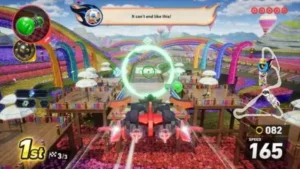
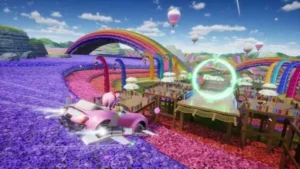
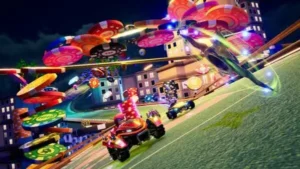
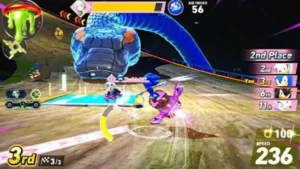
Download links
Join Telegram Group - Get First Game
How to install APK Sonic Racing: CrossWorlds?
1. Tap on the downloaded Sonic Racing: CrossWorlds APK file.
2. Tap install.
3. Follow the on-screen steps.

